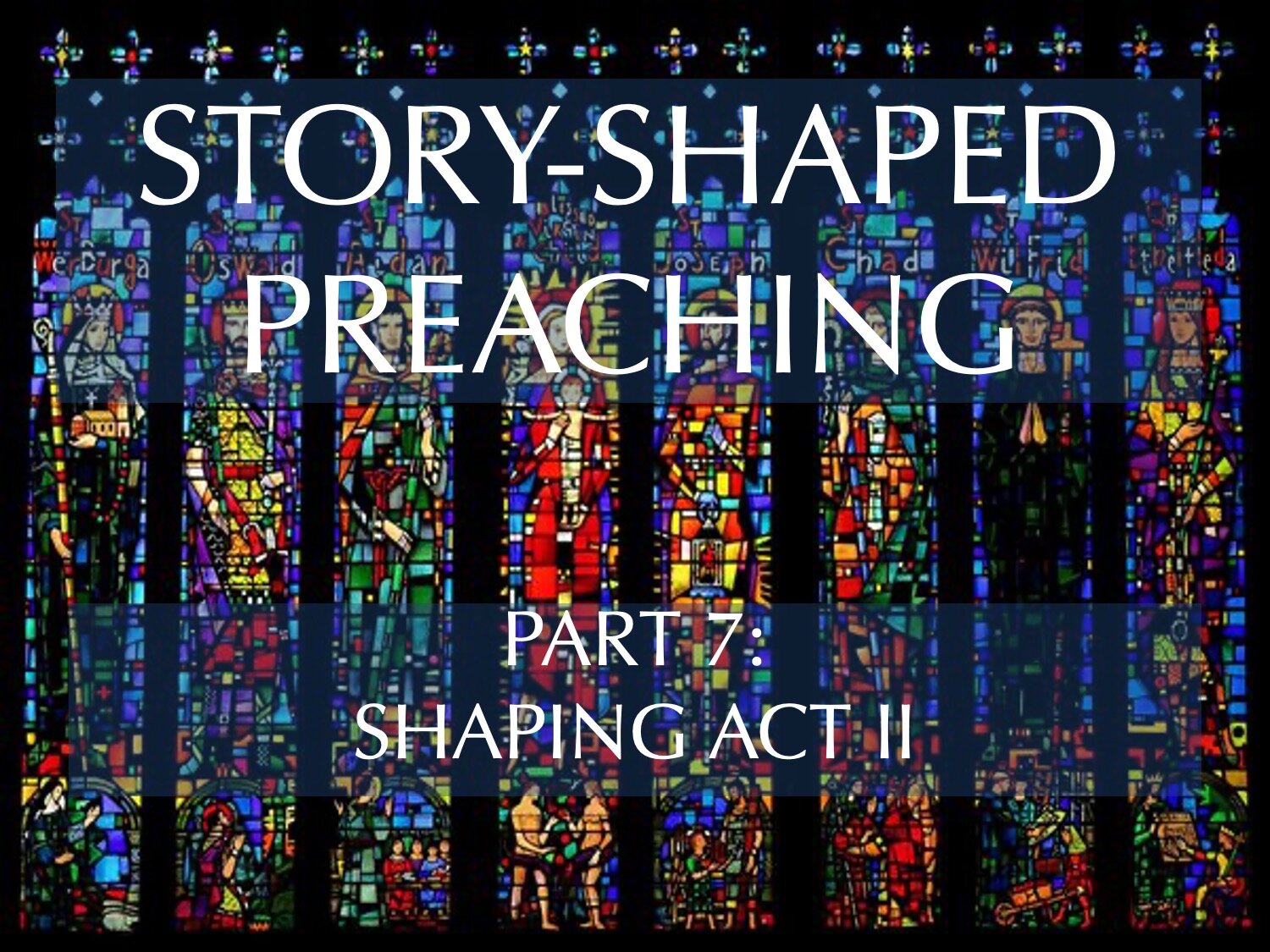
Story-Shaped
Preaching the Plot of the Gospel
The Plot of Story-Shaped Preaching
The Bible is a story. The gospel is a story. Our hearers live their daily lives within a story. When we preach, we invite them into God’s story. When they experience gospel transformation, it comes about through the narrative tension created by the conviction of sin, leading to a crisis of faith and resolved in a climax of grace. If story is the shape of the Scriptures, the shape of the gospel, and the shape of Christian experience, what should be the shape of our sermons?
For many preachers, “narrative preaching” implies sermons that are unclear, unfocused, and open-ended. This is a misconception. For others, the thought of anything other than a straightforward, deductive presentation is uncomfortable, unfamiliar and even scary. This may be a problem, but it has a solution.
The posts in this section make a case for narrative as the most appropriate sermon form for gospel-driven preaching, and offer some handles for pulling it off.
Story-shaped preaching is not pointless preaching. But it does follow the Bible’s own example by allowing the point to emerge from the biblical story, instead of imposing points on the story, or using the story merely to illustrate the point.
God communicates with us in story because Story is the most relational, most personal, and most transformative way to communicate truth. Our lives, our identity, and our culture are shaped by story. If the gospel is to shape us, it must come to us in story.
Act II is the quiet, persistent workhorse of the three-act plot. Act I grabs attention, introduces conflict and makes promises about where the sermon will lead. Act III gets the thrill of a climactic gospel turn and resolution. Act II inherits the expectations of Act I and carries the longest stretch of the narrative while laying the groundwork for the grand revelation of Act III. It is like a dutiful middle child, living in the shadow of the highly successful older brother while deferring attention and resources to the darling younger sister.
The work of Act II may not be as glamorous, but it is just as essential to the transformation we seek in the story-shaped sermon. It has several important jobs to do.
This is the job of Act I in a narrative sermon: to create interest through urgency by placing us in a story where the message really matters. How do you accomplish this? Here are four steps for stirring interest through urgency.
Before we begin to plot our story-shaped sermon, there are three preliminary items we need to define. Consider these to be narrative “add-on’s” to our Homiletical Conclusions. Taking aim in these areas before you begin will save time and establish clarity from the start.
These three components will help you establish the focus of the sermon, the tension of the sermon, and the moment of discovery that will help you get to the sermon climax in the end.
“Plot” is the sequence of events through which a story moves. Aristotle saw two fundamental movements common to all plots: the complication and the dénouement. (Poetics, XVIII) Contemporary fiction writers expand the list to five events. It is no coincidence that these correspond almost precisely to the five movements described by Lowry as the “homiletical plot.” (The Homiletical Plot: The Sermon as Narrative Art Form. Louisville: Westminster John Knox Press, 2001, 27-87) They are time-honored and universal—prominent in all narrative genres and media, from simple storytelling, to literature, to the silver screen. Film makers arrange these five movements into three acts.
Can preachers learn anything from specialists in communication who have no direct interest in preaching? We’d better. In fact, we always have. From the New Testament onward, Christian preaching has “baptized” the prevailing rhetoric of each era in service of the gospel. For this reason, I occasionally like to read a book written by a contemporary rhetorician.
So far in this series of posts, I have tried to make a case for story-shaped preaching. I hope the message has come through clearly that the most compelling reason for story-shaped preaching is that “story” is the shape of the gospel. The question now becomes, “How do preach in such a way that every sermon is a retelling of the gospel story, applied to some aspect of contemporary life?”
Let me tell you the story of my journey with story…
It began with a practical need. I was teaching preaching in Portugal, and asking myself, “How can I equip my students to preach effectively to their generation?” The traditional method I knew best was fine as long as they were preaching to congregations filled with believers. But I became convinced that, when it came to skeptical, post-modern, anti-authoritarian Europeans, a deductive frontal assault was usually ineffective. So I began to look around for a different method, a more post-Christian-friendly rhetoric.
I believe that preaching in a post-Christian context will require, as a rule, a story shape. I have some good reasons for this, which I will share, but I recognize that I am swimming upstream in our Evangelical sub-culture. The weakness of some narrative preaching is no reason to discard the Bible’s most prominent form
Perhaps the best starting point for this series of posts on Story-Shaped Preaching is to define what it is, and what it isn’t. I’ll do this by answering three myths that I sometimes hear about narrative preaching.
What would make your list of qualities of a good sermon? For some, the priority is on the substance of the message. Others recognize that it doesn’t matter what you intend to say if you can’t say it clearly enough for the message to be understood. For others, interest is paramount — whatever the sermon is, it should not be boring!
Which perspective is correct? Like many either-or questions, the answer is “yes!” All of the above! So, here is my current list …











Regardless of the sermon form you are using, the part of the sermon you need to plan most carefully is the end. This is the moment of highest intensity, the time for decision, the point at which the truth of the sermon comes either to a triumphant climax or a tired fizzle. It is time to “land the plane” and if you do not have a checklist to follow, you may well find yourself circling the runway (or just flying out to sea) until you run out of gas and sputter to a crash landing.
I find it best to have a clear sequence to follow when planning the end of the sermon. This is as true for a story-shaped sermon as it is for a deductive one. Here is the sequence I recommend for Act III: